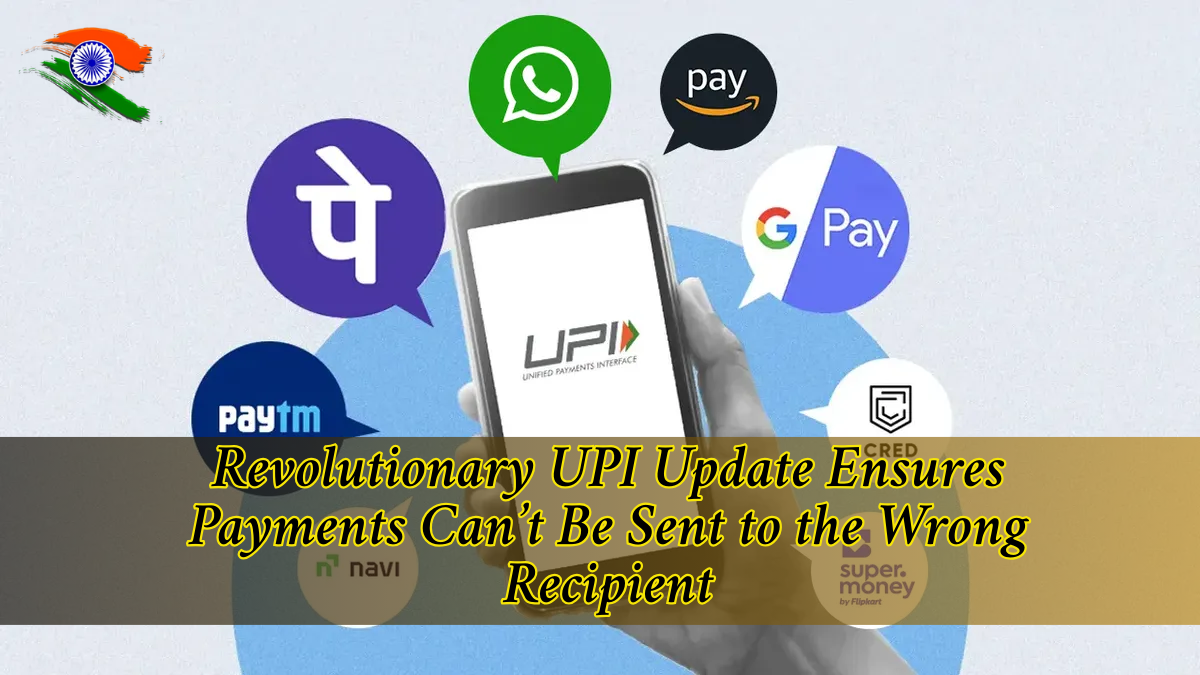India’s digital payment infrastructure, particularly the Unified Payments Interface (UPI), continues to evolve with a strong emphasis on user security and transparency. In a groundbreaking move set to take effect from 30 June 2025, the National Payments Corporation of India (NPCI) has introduced a new rule aimed at tackling fraud and user confusion during UPI transactions.

Under the new regulation, UPI applications will now be mandated to display the bank-verified name of the recipient at the time of payment confirmation. This replaces the earlier system where users only saw aliases, nicknames, or names derived from saved contacts or QR codes—often leading to inadvertent mistakes or fraud.
Table of Contents
Short Summary Table: UPI New Rule

Aspect |
Details |
|---|---|
Effective Date |
30 June 2025 |
Announced By |
National Payments Corporation of India (NPCI) |
What Changes |
Display of bank-verified recipient names at payment confirmation |
Previously Displayed Name |
Alias, nickname, saved contact name, QR-derived name |
Now Displayed Name |
CBS-verified official name fetched via secure API |
Applicable Transactions |
P2P (Person-to-Person), P2PM (Person-to-Merchant) |
Goal of the Change |
Fraud reduction, increased transparency, user confidence |
Payment Process Change? |
No. Payment steps remain the same, only final confirmation screen updated |
Official NPCI Website |
Why This Change Was Necessary
Digital payment fraud has been a growing concern in India, especially as UPI adoption surged. One of the most commonly exploited vulnerabilities was the display of non-verified names (user-defined or app-saved), which left scope for manipulation.
Common Issues with Previous UPI Display System:
- Fraudsters created fake QR codes with names resembling known brands or people.
- Users frequently mistook aliases for legitimate names.
- Mismatches in saved contact names vs. actual recipients often led to incorrect payments.
- No mechanism existed to authenticate the identity shown before completing a transaction.
The New Rule: A Secure Step Forward
In its directive dated 24 April 2025, NPCI outlined the requirements for UPI platforms to:
- Fetch and display Core Banking System (CBS)-verified names of beneficiaries.
- Implement this across both P2P (Person-to-Person) and P2PM (Person-to-Merchant) transactions.
- Use Secure APIs to retrieve real-time, authenticated data from banks.
How This New Feature Works
The fundamental change occurs at the final payment confirmation screen. Here’s how the user experience changes:
- Initiating Payment: Users can still begin transactions using:
- UPI ID
- Mobile number
- QR code
- New Confirmation Step: At the point of confirmation:
- Instead of a user-defined alias or saved contact, the official, bank-verified name of the recipient will be shown.
- This name is fetched directly from the bank’s CBS database and cannot be altered by users or apps.
- User Decision: The sender can now verify the true identity of the recipient and decide whether to proceed.
Core Benefits of the New Rule
1. Enhanced Security and Fraud Prevention
- Fraudsters can no longer spoof names to trick users.
- Verifying recipients’ real names makes impersonation difficult.
2. User Confidence and Transparency
- Users can confirm who they are paying.
- Builds trust in the UPI system, especially for merchants and new payees.
3. Accurate Identity for Merchants
- Helps ensure that money goes to verified businesses and service providers.
- Especially helpful in cases involving freelancers, small businesses, or informal vendors.
4. Unalterable Name Display
- Since the name is fetched from CBS via secure APIs, there is no way to tamper with or customize it.
Will This Change the Way We Use UPI?
Not at all. The fundamental payment process remains exactly the same. You can continue using your UPI app like before:
- Enter UPI ID / Scan QR code / Select from contacts.
- Enter amount.
- View verified name before hitting ‘Send’.
Only the recipient name display changes—making it more secure.
Industry Experts Weigh In
In an interview with The Times of India, Rahul Jain, MD at NTT DATA Payment Services, emphasized:
“Scammers often trick users with deceptive names that resemble well-known brands. With this change, it will be much harder to impersonate entities, as the verified bank name will be shown.”
Security professionals also believe this change will significantly reduce UPI-based scams involving fake merchants, especially on platforms like OLX, WhatsApp Marketplace, and social media classifieds.
Implementation Timeline and Compliance
- Deadline for Implementation: 30 June 2025
- Applicable Platforms: All UPI-enabled apps like PhonePe, Google Pay, Paytm, BHIM, etc.
- Enforcement Body: National Payments Corporation of India (NPCI)
Apps that fail to comply may face regulatory penalties or limitations on UPI service availability.
FAQs (Frequently Asked Questions)
Q1. What is CBS and why is it important in this rule?
CBS stands for Core Banking System. It’s the backend system used by banks to manage customer accounts. By using CBS-verified names, UPI apps can ensure the displayed recipient name is official and cannot be tampered with.
Q2. Can users still pay using QR codes or mobile numbers?
Yes. The method of initiating the transaction remains the same. The only difference is that you’ll now see the bank-verified name of the recipient before confirming payment.
Q3. What if the verified name shown looks unfamiliar?
That’s the whole point of the update. If the name looks suspicious or doesn’t match the person or entity you intended to pay, you should cancel the transaction immediately to avoid potential fraud.
Q4. Will this rule apply to businesses and merchants too?
Yes. Both P2P and P2PM transactions are covered. Whether you’re paying an individual or a business, the name shown will be verified from the bank’s records.
Q5. Will UPI apps like Google Pay, PhonePe, Paytm be affected?
All UPI apps must comply with this directive from NPCI. You’ll see app updates or changes in the payment confirmation interface as the deadline approaches.
Conclusion
The new UPI rule introduced by NPCI is a significant leap forward in enhancing digital transaction security in India. By ensuring that the real, bank-verified names of recipients are displayed before sending money, the system not only deters fraud but also reinforces user trust in UPI platforms.
This change preserves the convenience of UPI while making it substantially more secure—a win for users, businesses, and India’s broader digital economy.
Click Here To Know More





